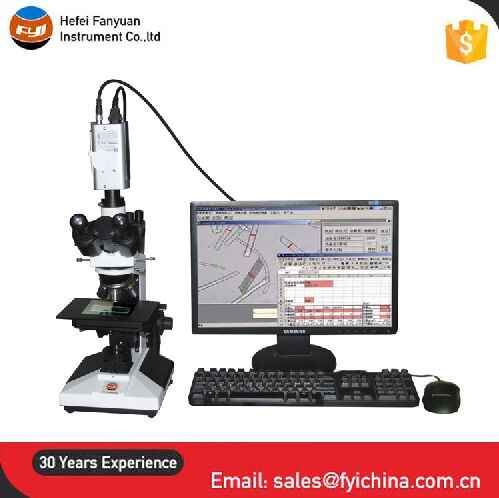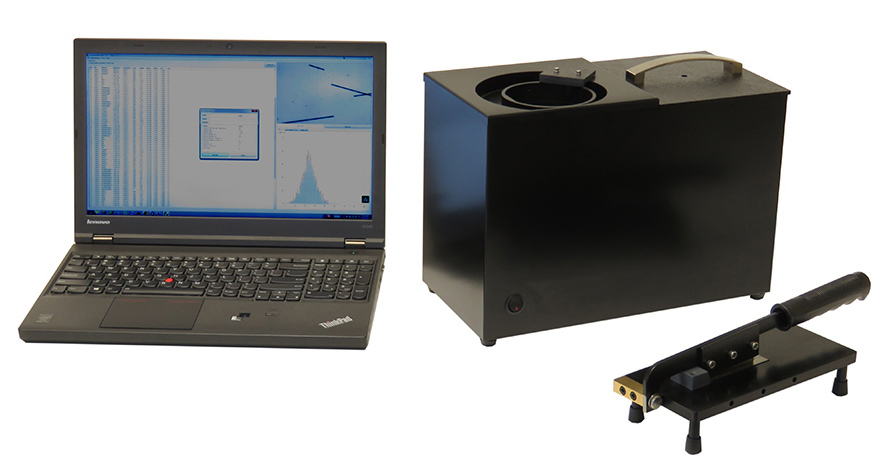Advanced Technology for Optical Fibre Diameter Analyser Precision
Maximize Your Fibre Optic Performance: Recognizing Optical Fiber Size Analyser Modern Technology
The performance of fibre optic systems is seriously affected by the accuracy of their diameter, an aspect frequently ignored in the search of ideal signal stability. Understanding the modern technology behind optical fiber diameter analysers discloses the detailed balance between measurement precision and production quality.
Significance of Optical Fibre Size
The size of optical fiber plays a critical function in figuring out the performance and efficiency of communication systems. Conversely, smaller sized diameters tend to support fewer modes, which can enhance signal quality and reduce crosstalk.

Furthermore, comprehending the size's implications can lead to set you back savings by lowering the need for signal boosting and repeaters in substantial networks (optical fibre diameter analyser). Finally, the value of optical fibre diameter can not be overemphasized, as it straight affects the total efficiency and dependability of modern-day interaction systems

Just How Diameter Influences Signal Quality
Signal high quality in optical fibre systems hinges dramatically on the diameter of the fiber. The size influences several key specifications, including attenuation, transmission capacity, and modal dispersion. A smaller sized diameter can result in greater attenuation rates, leading to signal loss as light trips with the fiber. This attenuation can compromise the honesty of the transmitted data, leading to a decline in signal top quality, specifically over lengthy ranges.
Conversely, bigger diameters normally permit improved light capture and lowered modal diffusion, boosting signal clarity. In multimode fibers, a bigger core diameter can support multiple light settings, yet it may additionally present intermodal dispersion, which can deteriorate signal quality. Selecting the optimum fibre size is critical for accomplishing the wanted efficiency in specific applications.
Furthermore, the interaction in between the fibre size and the wavelength of the light utilized plays a vital function in figuring out the effective transmission distance and general signal integrity. Therefore, recognizing exactly how fibre diameter affects signal high quality is necessary for network designers and designers making every effort to optimize optical fiber systems for reliable, high-speed information transmission.
Summary of Diameter Analyser Modern Technology
In many optical fibre manufacturing processes, accurate measurement of fiber size is necessary for making sure consistent performance and high quality (optical fibre diameter analyser). Size analysers are sophisticated tools made to analyze the physical measurements of optical fibres with high accuracy. They use innovative optical and laser innovations to gauge the diameter, ovality, and concentricity of the fibre, therefore offering important data for quality control
These analysers can run in-line throughout the production process or as part of off-line screening procedures. In-line systems make it possible for real-time monitoring, enabling makers to readjust criteria instantly, thus keeping ideal manufacturing problems. Off-line analysers, on the other hand, supply detailed examinations of batches, ensuring that any type of discrepancies from check my reference specified tolerances are identified and attended to.
Diameter analysers substantially add to the reduction of issues in optical fibers, boosting general product dependability. By continually measuring crucial parameters, these modern technologies facilitate compliance with industry criteria and specifications. As the demand for high-performance optical fibers continues to rise, the function of size analysers comes to be significantly crucial in achieving the desired top quality and performance criteria in fiber optic systems.
Key Features of Fiber Diameter Analysers
Although numerous designs of fiber diameter analysers exist, they generally share a number of crucial attributes that boost their capability and reliability. Among the most substantial functions is high-resolution measurement capacities, which guarantee exact diameter analyses, vital for keeping top quality control in fiber manufacturing. Additionally, lots of analysers incorporate innovative optical sensors created to detect minute variations in fiber diameter, therefore giving very useful data for process optimization.
One more essential attribute is real-time monitoring, allowing operators to receive immediate responses on fibre size throughout the manufacturing process (optical fibre diameter analyser). This capacity helps with fast changes and minimizes the chance of problems. Several analysers additionally come equipped with user-friendly interfaces, enabling drivers to quickly browse with data and setups results
Furthermore, robust information storage and analysis functionalities are crucial for tracking historical performance fads and ensuring conformity with sector requirements. These attributes jointly add to the efficiency of fiber size analysers in enhancing fibre optic efficiency.
Ideal Practices for Fiber Optimization

First, regular calibration of optical fibre size analysers is important. This ensures exact dimensions and lessens potential disparities that might influence efficiency. Next, maintaining a tidy workplace is important; dirt and impurities can bring about signal degradation.
In addition, it is essential to pick fibres that fulfill certain application demands. This includes examining variables such as attenuation, transmission capacity, and environmental problems. Correct setup techniques need to also be adhered to, consisting of staying clear of sharp bends and extreme tension, which can jeopardize fibre integrity.
Additionally, look at here utilizing sophisticated surveillance systems can promote real-time efficiency evaluations, making it possible for prompt identification of concerns. Normal screening and maintenance ought to be conducted to make certain that fibers stay within optimum functional parameters.
Lastly, training workers on the most up to date fibre optimization innovations and methodologies will boost their capability to carry out reliable strategies. By adhering to these best techniques, companies can considerably enhance the efficiency and life-span of their optical fibre systems, ensuring reliable communication and information transfer.
Final Thought
In final thought, the assimilation of optical fiber diameter analyser modern technology is important for making the most of fiber optic find more info performance. By making sure accurate measurements of fibre measurements, these analysers significantly boost signal top quality and reduce losses throughout data transmission.
Signal top quality in optical fibre systems hinges substantially on the diameter of the fiber.In numerous optical fiber manufacturing processes, accurate measurement of fiber size is important for making certain regular performance and high quality. As the need for high-performance optical fibers continues to climb, the role of diameter analysers comes to be significantly vital in achieving the preferred high quality and efficiency standards in fibre optic systems.
These functions jointly contribute to the effectiveness of fiber diameter analysers in enhancing fiber optic performance.
In final thought, the assimilation of optical fibre diameter analyser technology is crucial for making best use of fibre optic performance.